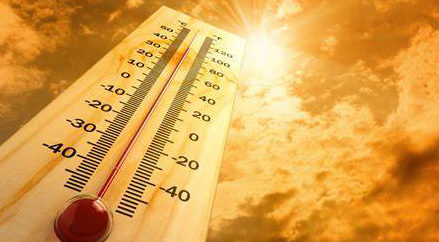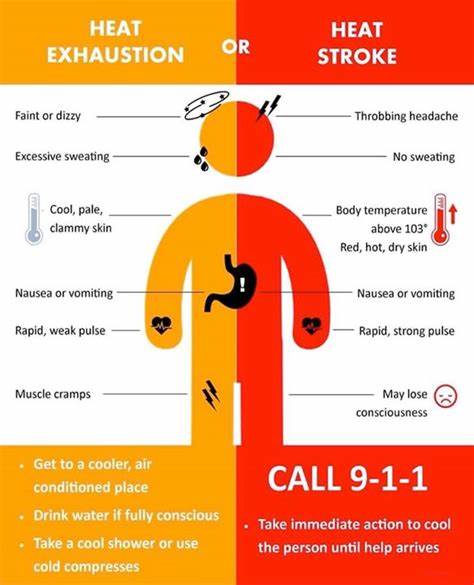
Tips for Staying Safe in Extreme Heat
Extreme heat and heat waves occur more frequently, last longer, and are more severe than ever before. When there is a heat wave that happens over several days and is much hotter than historically average for a time and location, it’s called an “extreme heat event.” Many of us are unprepared for these record-breaking heat waves of late. Heat-related illness is preventable, but can cause mild to severe sickness and even death.
Keep your family and friends safe this summer, especially if you live in an area with severe heat. Monitor your weather reports and get local weather alerts. They can keep you up-to-date and help you prevent heat-related illnesses. There are precautions you can take for you, your family and co-workers to prevent heat-related illness. For unhoused residents or those who do not have access to cool places, many cities and towns open cooling centers during the summer to help residents stay out of the heat (contact your local health department for information on cooling centers). Other places in your community where you can go to get cool are libraries and mall.
Stay Hydrated
Staying hydrated may be common sense, but it’s worth repeating. Staying hydrated means drinking water regularly; if you wait until you’re thirsty, your body is already heading toward dehydration. During extreme heat, your body is losing fluids constantly which is why staying hydrated regularly is important. Avoid drinking alcoholic or sugar beverages – they can cause dehydration even if they seem thirst-quenching.
Who is Most Vulnerable to Extreme Heat Conditions?
While anyone can be affected by heat, some of our family and friends are more susceptible to heat than others.
Infants and Children – Infants and young children are especially vulnerable to heat and often are not able to tell you something is wrong. NEVER leave infants or children in a parked car for any length of time, even with the windows open. When it’s not hot, the temperature in a car can rise over 20 degrees in 10 minutes; it will rise even more rapidly in the heat.
Our Seniors – Our seniors are just as susceptible to heat-illnesses as young children. Make sure seniors in your family or neighborhood have access to cool conditions/air-conditioned places and are drinking enough water.
Pets – So many more people travel with pets nowadays. NEVER leave pets in a parked car; they are in as much danger in a car, even with the windows open, as a child. If you have a dog, keep in mind that asphalt can heat up to a high level; consider walking your pet on grass instead. Also, consider a shorter walk and remember to take water. If your pet it outside, make sure to provide plenty of shade and water.
Medical Conditions – People with certain chronic medical conditions are also vulnerable. They may be taking medications that can make the effects of high temperatures worse. They may not realize the heat is taking a toll, so monitor their water intake and cool conditions as well.
People Working Outside – People whose jobs require them to work outside are especially susceptible to dehydration and suffering from heat-related illnesses. They should drink fluids more than the average person. If possible, wear a head covering and light-colored clothing. Scheduling work earlier in the morning or later in the afternoon (after midday heat and out of noon time sun) and finding air-conditioned spaces for breaks is advised. If working with other people, keep an eye on each other for any signs of heat exhaustion or heat stroke.
Athletes – Athletes are also prone to dehydration and heat-related illnesses, and more so if they are not indoors. Often sports teams begin practices in the middle of summer; consider adjusting practices and workouts earlier or later when the temperatures are cooler. Athletes should always drink plenty of water, avoiding sugary workout drinks. Teammates should keep an eye on each other’s conditions and report any signs of heat-related illness.
Heat Cramps vs. Heat Exhaustion vs. Heat Stroke
Especially for those people who are susceptible to heat or who must be in the heat, watch for heat cramps, heat exhaustion and heat stroke.
Most acute is heat stroke. Heat stroke is a medical emergency.
Signs of heat stroke include:
- Extremely high body temperature (above 103 degrees F, if using an oral thermometer)
- Red, hot, and dry skin but no sweating
- Rapid, strong pulse
- Dizziness, confusion, or unconsciousness
Immediately move the person to a cooler environment. Try to reduce their body temperature with cool cloths or even a bath. Do NOT give the person anything to drink.
if someone is experiencing symptoms of heat stroke, call 9-1-1 immediately!
Heat exhaustion is not critical like heat stroke, but someone suffering from heat exhaustion will be uncomfortable and need to be monitored so that symptoms do not become more severe.
Signs of heat exhaustion include:
- Heavy sweating
- Pale color
- Muscle cramps
- Fatigue, tiredness, and weakness
- Fast OR weak pulse
- Dizziness
- Headache
- Fainting
- Nausea and vomiting
Heat cramps are uncomfortable , and include muscle pains or spasms in the stomach, arms or legs.
With heat exhaustion and heat cramps, move to a cooler place and cool down by removing unnecessary clothing. Sip on water or sports drinks with electrolytes. If the symptoms don’t subside, last more than an hour or get worse, call your healthcare or consider visiting urgent care.

Image: National Weather Service
The Centers for Disease Control and Prevention offers a very comprehensive and helpful printable chart that tells what to look for and what to do when someone is experiencing a heat-related illness from sunburn to sun stroke: “Warning Signs and Symptoms of Heat-Related Illness”.
- Commercial Security
- Community
- HOA
- Neighborhoods
- Organizational Security
- Residential Security
- School Security